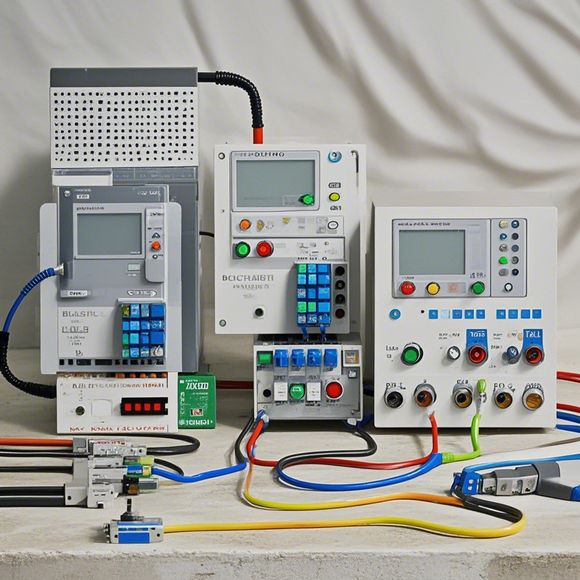Introduction to PLC Controllers: An In-Depth Look into the Future of Automation
Hello everyone, today we are going to delve into the fascinating world of PLC controllers, also known as Programmable Logic Controllers, which are transforming the way we operate and manage our industrial processes. These devices are at the core of modern automation systems, allowing for precise control and monitoring of various industrial processes. So, without any further ado, let's dive into the intricacies of these marvelous machines.
Firstly, let's start with the basics. A PLC controller is essentially a small computer that sits inside an industrial machine or system, designed specifically for controlling and monitoring the operations of a particular process. Unlike traditional mechanical switches or relays, a PLC operates on software logic, allowing for complex calculations and decision-making that would be impractical or impossible with hardware alone.
Now, one of the key benefits of PLCs is their flexibility. They can be configured to control a wide range of different processes, from simple temperature control to complex assembly line robotics. This makes them ideal for applications where precise control is essential, such as food processing, medical equipment, and automotive manufacturing. Additionally, PLCs offer a high level of reliability, as they are designed to withstand the harsh environments that these industrial processes often require.

Another important aspect of PLCs is their ability to integrate seamlessly with other systems. Many modern PLC controllers come equipped with communication ports such as Ethernet, Wi-Fi, or Bluetooth, allowing for easy integration with other systems like MES (Manufacturing Execution System), SCADA (Supervisory Control And Data Acquisition) systems, or even cloud-based solutions. This not only streamlines operations but also enhances the overall efficiency of the system.
But perhaps the most exciting aspect of PLCs is their ability to adapt to changing circumstances. With the help of sensors and actuators, PLCs can monitor real-time data and adjust their control strategies accordingly. For example, if a process is experiencing fluctuations in temperature or pressure, the PLC can quickly identify the problem and take corrective action, ensuring that the process remains stable and efficient.

However, with so much potential comes also some challenges. One of the main concerns when using PLCs is security. As these devices often contain sensitive information, it is crucial to ensure that they are properly protected against unauthorized access. Additionally, PLCs can be complex and require a significant amount of technical expertise to troubleshoot and maintain. Therefore, it is important to have experienced professionals on hand to handle any issues that may arise.
In conclusion, PLCs represent the future of industrial automation, offering unparalleled flexibility, reliability, and adaptability. With their ability to seamlessly integrate with existing systems and respond to changing circumstances, they are revolutionizing the way we operate and manage our industrial processes. Whether you are a small-scale business owner or a large-scale manufacturer, PLCs are definitely worth considering as part of your automation strategy. So, let's embrace the future of automation together and see what innovations await us!

Content expansion reading:
Articles related to the knowledge points of this article:
PLC Controller for Manufacturing Automation
PLC Programming for Automation Control in the Manufacturing Industry
How to Use a PLC Controller for Your Business
PLC (Programmable Logic Controller) Control System Basics
Connecting a PLC Controller to Your Computer
PLC Controllers: A Comprehensive Guide to Understanding Their Prices